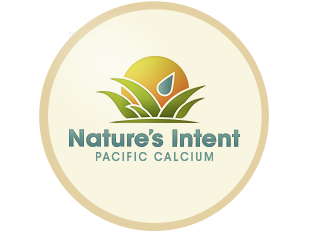Summary of Results and Conclusions from Five Years of Organic Fertilization Trials Mark Gaskell, Ph.D, Farm Advisor
From the Central Coast Agriculture Highlights newsletter, February 2001
We have been conducting research with green manure cover crops, compost, and other organic fertilizer materials for the past several seasons. The results of this research and some of the conclusions to date are summarized here.
Compost and green manure are often the backbone of crop nutrition programs in organic production systems. They are the most economical forms of organic matter to add to soil to raise overall soil organic matter as part of organic soil building programs. They are important for building soil organic matter in a given field but this is typically a routine and continuous process for most organic growers. Little appreciable gain in organic matter can be expected from one or two incorporations of compost or green manure and the organic matter-building program should be a continuing process.
A vigorous green manure allowed to grow for 120 to 150 days often supplies 200 to 300 lb per acre of nitrogen (N) and may keep potassium and other nutrients from leaching out of the root zone. Compost typically supplies 1-2.5 % of N, phosphorus, and potassium on a dry weight basis as well as smaller amounts of other nutrients. Compost materials are highly variable in quality however, and it is important that growers become familiar with their source of compost and how it is produced and the implications for the quality of the material. Compost materials are typically 25-30% moisture and thus corrections should be made for moisture when considering nutrient value and cost. Nutrients that do not readily leach will slowly accumulate in the field with repeated applications and reach levels where additional applications are not needed.
Green manure and compost are the most economical forms of organic N and other nutrients and these materials often supply adequate total amounts of N. There is growing evidence however, that the release of N from these materials may not match crop needs. Compost in particular can be quite variable and the amount and timing of N release from compost - even high quality compost - can be quite variable. Compost quality is important to determine its value as a nutrient source but even with high quality compost the short-term effects on soil nitrogen (N) or yield are variable. Bio-availability is the real issue because the compost must be partially broken down by bacteria to release the N. The material may not be readily available to the bacteria because, of the bulk, heterogeneity and the difficulty of mixing or placement, as well as, particle size, solubility, other factors.
The soil nitrate-N (SNN), which is the predominant plant available N form in agricultural soils, increases measurably when a soil is tilled with the incorporation of any residue. The SNN will increase more with the incorporation of higher amounts of N containing material such as green manure, compost, and other organic fertilizer materials. The SNN tends to stay high over a period lasting 6-8 weeks and then falls to baseline or background SNN levels. We have not seen any indication of a sustained release of N from compost or other organic N materials. Thus for longer season crops such as bell peppers, it is likely that supplemental N will be required during the growing season. One study has shown some measurable lasting effect from green manure but the amounts are not sufficient to produce highest bell pepper yields.
Our studies have shown clear differences in the amounts and timing of release of N from different organic fertilizer materials. Compost tends to be low in total amount and variable in release rate. The highest amounts of N released and most rapid release rates come from materials such as feather meal, seabird guano, liquid fish, and liquid soybean meal. Of these feather meal has been tested the most. These are the conclusions thus far when comparing materials at the far extremes such as compost and feather meal with or without a prior green manure crop:
Total pepper yield was not affected by the rate of N application as much as was extra large and early pepper yield.
Increasing rates of N applied as feather meal increased extra large and early pepper yield up to a about 200 lb N per acre.
With a prior green manure crop, feather meal plots reach highest yields with ~120 lb N but without prior green manure need about 200 lb N or more for highest yields.
There is an early flush of N that comes from tilling the soil and this flush increases if green manure, compost, or other organic N source is added to the soil.
Plant N needs are low early and increase markedly for 60-90 days. The critical period of N need for peppers may be 40-90 days?
Feather meal is an alternative source of organic N that is more rapidly converted to nitrate-N than compost and may be a useful source of N to complement N from compost or green manure. It is more soluble but also is a more concentrated, finer material that may be more effectively distributed in the root zone when side-dressing. The short-term (current crop) effects of compost on soil N or yield are small and inconsistent.
Adding nitrogen amendments pre-plant may not be as efficient as later side-dress applications. It is likely that a combination of preplant and side dress applications are needed - particularly in the absence of a prior green manure crop. We have not yet had the opportunity to test combinations of materials but the most efficient combination of practices given the above results may be to apply 4-5 tons of compost preplant combined with 2-3 subsequent side dress applications of a more readily available organic N source such as feather meal. Other organic fertilizer materials such as seabird guano, liquid soybean meal, liquid fish or others may have similar value as more readily available organic N sources.

